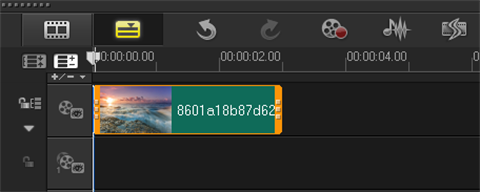My form looks like this:
public function buildForm(FormBuilderInterface $builder, array $options)
{
$factory = $builder->getFormFactory();
$builder->add('name');
$builder->add('description');
$builder->add('manufacturers', null, array(
'required' => false
));
$builder->add('departments', 'collection', array(
'type' => new Department
));
}
I have a class validator on the entity the form represents which calls:
if (!$valid) {
$this->context->addViolationAtSubPath('departments', $constraint->message);
}
Which will only add a 'global' error to the form, not an error at the sub path. I assume this is because departments is a collection embedding another FormType.
If I changed departments to one of the other fields it works fine.
How can I get this error to appear in the right place? I assume it would work fine if my error was on a single entity within the collection, and thus rendered in the child form, but my criteria is that the violation occur if none of the entities in the collection are marked as active, thus it needs to be at the parent level.
By default, forms have the option "error_bubbling" set to true, which causes the behavior you just described. You can turn off this option for individual forms if you want them to keep their errors.
$builder->add('departments', 'collection', array(
'type' => new Department,
'error_bubbling' => false,
));
I have been wrestling with this issue in Symfony 3.3, where I wished to validate an entire collection, but pass the error to the appropriate collection element/field. The collection is added to the form thus:
$form->add('grades', CollectionType::class,
[
'label' => 'student.grades.label',
'allow_add' => true,
'allow_delete' => true,
'entry_type' => StudentGradeType::class,
'attr' => [
'class' => 'gradeList',
'help' => 'student.grades.help',
],
'entry_options' => [
'systemYear' => $form->getConfig()->getOption('systemYear'),
],
'constraints' => [
new Grades(),
],
]
);
The StudentGradeType is:
<?php
namespace Busybee\Management\GradeBundle\Form;
use Busybee\Core\CalendarBundle\Entity\Grade;
use Busybee\Core\SecurityBundle\Form\DataTransformer\EntityToStringTransformer;
use Busybee\Core\TemplateBundle\Type\SettingChoiceType;
use Busybee\Management\GradeBundle\Entity\StudentGrade;
use Busybee\People\StudentBundle\Entity\Student;
use Doctrine\Common\Persistence\ObjectManager;
use Doctrine\ORM\EntityRepository;
use Symfony\Bridge\Doctrine\Form\Type\EntityType;
use Symfony\Component\Form\AbstractType;
use Symfony\Component\Form\Extension\Core\Type\HiddenType;
use Symfony\Component\Form\FormBuilderInterface;
use Symfony\Component\OptionsResolver\OptionsResolver;
class StudentGradeType extends AbstractType
{
/**
* @var ObjectManager
*/
private $om;
/**
* StaffType constructor.
*
* @param ObjectManager $om
*/
public function __construct(ObjectManager $om)
{
$this->om = $om;
}
/**
* {@inheritdoc}
*/
public function buildForm(FormBuilderInterface $builder, array $options)
{
$builder
->add('status', SettingChoiceType::class,
[
'setting_name' => 'student.enrolment.status',
'label' => 'grades.label.status',
'placeholder' => 'grades.placeholder.status',
'attr' => [
'help' => 'grades.help.status',
],
]
)
->add('student', HiddenType::class)
->add('grade', EntityType::class,
[
'class' => Grade::class,
'choice_label' => 'gradeYear',
'query_builder' => function (EntityRepository $er) {
return $er->createQueryBuilder('g')
->orderBy('g.year', 'DESC')
->addOrderBy('g.sequence', 'ASC');
},
'placeholder' => 'grades.placeholder.grade',
'label' => 'grades.label.grade',
'attr' => [
'help' => 'grades.help.grade',
],
]
);
$builder->get('student')->addModelTransformer(new EntityToStringTransformer($this->om, Student::class));
}
/**
* {@inheritdoc}
*/
public function configureOptions(OptionsResolver $resolver)
{
$resolver
->setDefaults(
[
'data_class' => StudentGrade::class,
'translation_domain' => 'BusybeeStudentBundle',
'systemYear' => null,
'error_bubbling' => true,
]
);
}
/**
* {@inheritdoc}
*/
public function getBlockPrefix()
{
return 'grade_by_student';
}
}
and the validator looks like:
namespace Busybee\Management\GradeBundle\Validator\Constraints;
use Busybee\Core\CalendarBundle\Entity\Year;
use Symfony\Component\Validator\Constraint;
use Symfony\Component\Validator\ConstraintValidator;
class GradesValidator extends ConstraintValidator
{
public function validate($value, Constraint $constraint)
{
if (empty($value))
return;
$current = 0;
$year = [];
foreach ($value->toArray() as $q=>$grade)
{
if (empty($grade->getStudent()) || empty($grade->getGrade()))
{
$this->context->buildViolation('student.grades.empty')
->addViolation();
return $value;
}
if ($grade->getStatus() === 'Current')
{
$current++;
if ($current > 1)
{
$this->context->buildViolation('student.grades.current')
->atPath('['.strval($q).']') // could do a single atPath with a value of "[".strval($q)."].status"
->atPath('status') // full path = children['grades'].data[1].status
->addViolation();
return $value;
}
}
$gy = $grade->getGradeYear();
if (! is_null($gy))
{
$year[$gy] = empty($year[$gy]) ? 1 : $year[$gy] + 1 ;
if ($year[$gy] > 1)
{
$this->context->buildViolation('student.grades.year')
->atPath('['.strval($q).']')
->atPath('grade')
->addViolation();
return $value;
}
}
}
}
}
This results in the error being added to the field in the element of the collection as per the attach image.

Craig
I have a case very similar. I have a CollectionType with a Custom Form (with DataTransformers inside, etc...), i need check one by one the elements and mark what of them is wrong and print it on the view.
I make that solution at the ConstraintValidator (my custom validator):
The validator must target to CLASS_CONSTRAINT to work or the propertyPath doesnt work.
public function validate($value, Constraint $constraint) {
/** @var Form $form */
$form = $this->context->getRoot();
$studentsForm = $form->get("students"); //CollectionType's name in the root Type
$rootPath = $studentsForm->getPropertyPath()->getElement(0);
/** @var Form $studentForm */
foreach($studentsForm as $studentForm){
//Iterate over the items in the collection type
$studentPath = $studentForm->getPropertyPath()->getElement(0);
//Get the data typed on the item (in my case, it use an DataTransformer and i can get an User object from the child TextType)
/** @var User $user */
$user = $studentForm->getData();
//Validate your data
$email = $user->getEmail();
$user = $userRepository->findByEmailAndCentro($email, $centro);
if(!$user){
//If your data is wrong build the violation from the propertyPath getted from the item Type
$this->context->buildViolation($constraint->message)
->atPath($rootPath)
->atPath(sprintf("[%s]", $studentPath))
->atPath("email") //That last is the name property on the item Type
->addViolation();
}
}
}
Just i validate agains the form elements in the collection and build the violation using the propertyPath from the item in the collection that is wrong.






